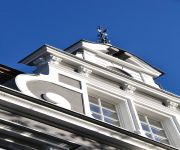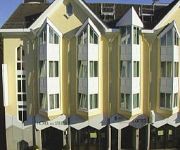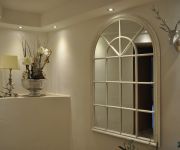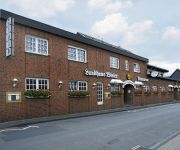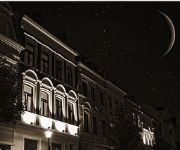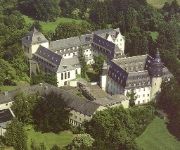Facts and Data
Webpages:
Official Unesco Page
Castles of Augustusburg and Falkenlust at Brühl (in German)
View photos from OUR PLACE the World Heritage collection
Schlösser Augustusburg und Falkenlust in Brühl (Deutsche UNESCO-Kommission - german only)
Basis Data:
Unesco World heritage since: 1984
Size of heritage: 89 ha
Coordinates:
Longitude: 6,910°
Latitude: 50,825°
Summary
Set in an idyllic garden landscape, Augustusburg Castle (the sumptuous residence of the prince-archbishops of Cologne) and the Falkenlust hunting lodge (a small rural folly) are among the earliest examples of Rococo architecture in 18th-century Germany.
Location on Map
Show bigger map on Openstreetmap
Castles of Augustusburg and Falkenlust at Brühl
The Castles of Augustusburg and Falkenlust at Brühl, located in the state of North Rhine-Westphalia (Nordrhein-Westfalen), Germany, are two magnificent examples of Rococo architecture and are recognized as a UNESCO World Heritage site. These castles, built in the 18th century, showcase the opulence and grandeur of the Baroque era and are a testament to the artistic and architectural achievements of the time.
History
The construction of the Augustusburg Castle began in 1725 under the patronage of Archbishop-Elector Clemens August of Cologne. The castle was designed by the renowned architect Johann Conrad Schlaun, who incorporated elements of French Rococo style into the building's design. It served as a hunting lodge and a place for entertaining guests, reflecting the luxurious lifestyle of the aristocracy during that period.
Adjacent to Augustusburg Castle is Falkenlust, a smaller hunting lodge built between 1729 and 1740. It was also designed by Schlaun and features a more intimate and refined interior. Falkenlust was primarily used for falconry, a popular pastime among the nobility at the time.
During the French Revolution, the castles were seized by the French army and used as barracks. However, they were returned to the Archbishop-Electorate of Cologne in 1815 after the defeat of Napoleon. In the following years, the castles underwent various renovations and restorations to preserve their original splendor.
Current State
Today, the Castles of Augustusburg and Falkenlust are open to the public and offer a glimpse into the lavish lifestyle of the 18th-century aristocracy. The interiors of both castles are adorned with exquisite Rococo decorations, including ornate stucco work, frescoes, and intricate woodwork.
Visitors can explore the opulent state rooms, including the Great Hall, the Marble Hall, and the Mirror Room, which are adorned with beautiful chandeliers, gilded furniture, and intricate tapestries. The castles also house a remarkable collection of art, including paintings, sculptures, and porcelain, showcasing the artistic achievements of the time.
The surrounding gardens and parklands of the castles are equally impressive. The Augustusburg Castle is surrounded by a vast English landscape garden, while Falkenlust is set within a French-style formal garden. These meticulously designed gardens provide a serene and picturesque setting for visitors to enjoy.
The Castles of Augustusburg and Falkenlust at Brühl have not only been recognized for their architectural and artistic significance but also for their historical importance. They serve as a reminder of the cultural heritage of the region and attract visitors from around the world who are captivated by their beauty and historical significance.
Overall, the Castles of Augustusburg and Falkenlust at Brühl are a testament to the grandeur and elegance of the Rococo period. They offer a unique opportunity to step back in time and experience the splendor of the 18th-century aristocracy, making them a must-visit destination for history and architecture enthusiasts alike.
Hotels and places to stay
H+ Hotel Brühl
Six! eat work sleep
Am Stern
Bonprix
Jägerhof
Zur Krone Hotel Gasthof
Wieler Landhaus
Balthasar Neumann Gästehaus
Haus Danz Hotel & Restaurant
Carea Domäne Walberberg Schlosshotel
Videos from the area
Videos provided by Youtube are under the copyright of their owners.


